If the eyes are the windows to the soul, maybe windows help convey the soul or true nature of historic buildings?
Old building enthusiasts often cringe at the very bad things that have been done to original windows. For whatever reason, historical significance or pure aesthetics, the proportions, style, design and materials of windows have a big impact on the appearance and perception of buildings.
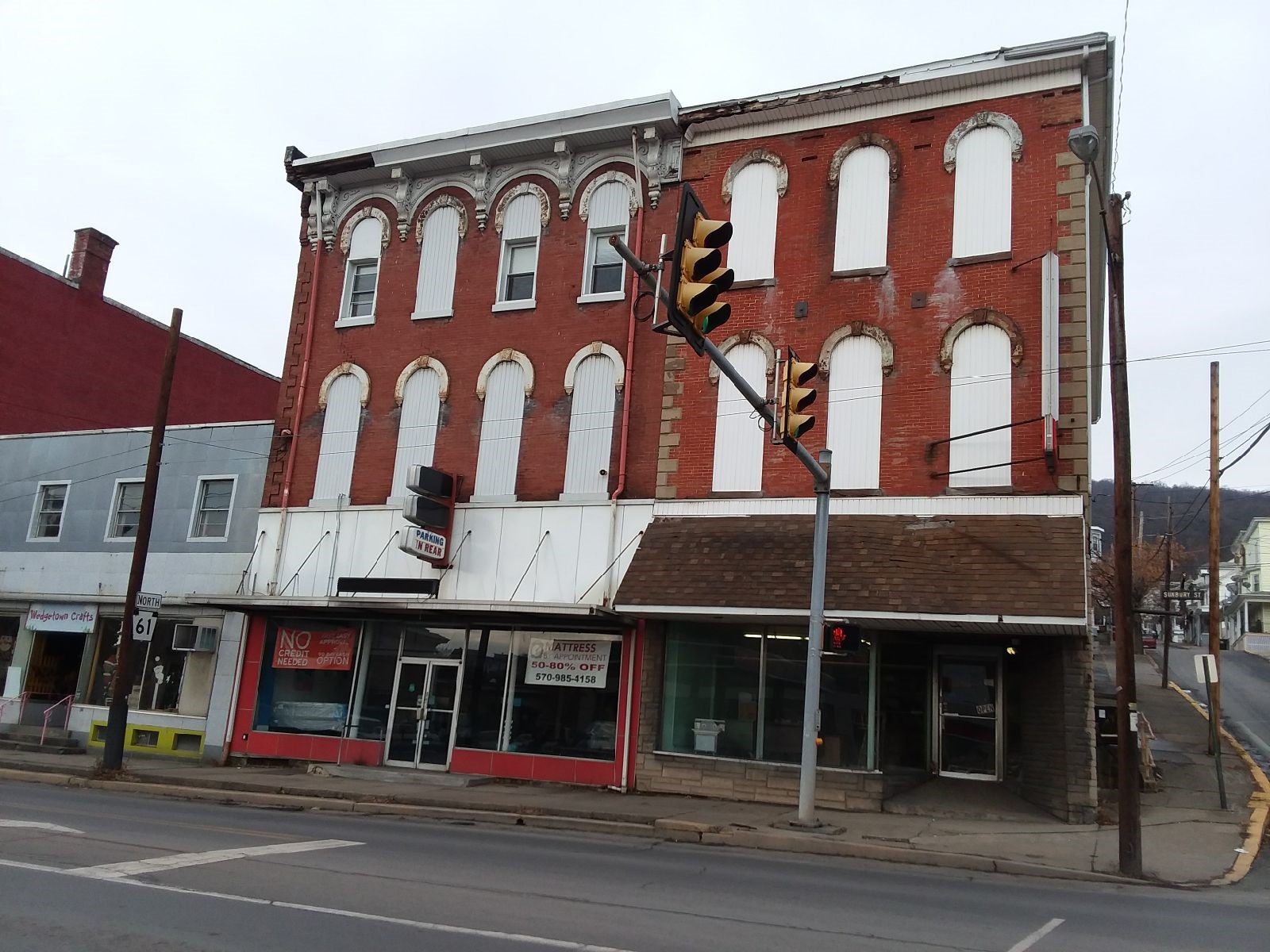
Commercial building with almost complete window infill.
Personally, while the bricking in or covering up of original window openings is a sad occurrence, the replacement of a large, elegantly proportioned window with a tiny, postage stamp size, new window is also a real affront. And, it is startling to see an intact row of matching houses with the original fenestration pattern disrupted by strangely proportioned or oddly shaped replacement windows.
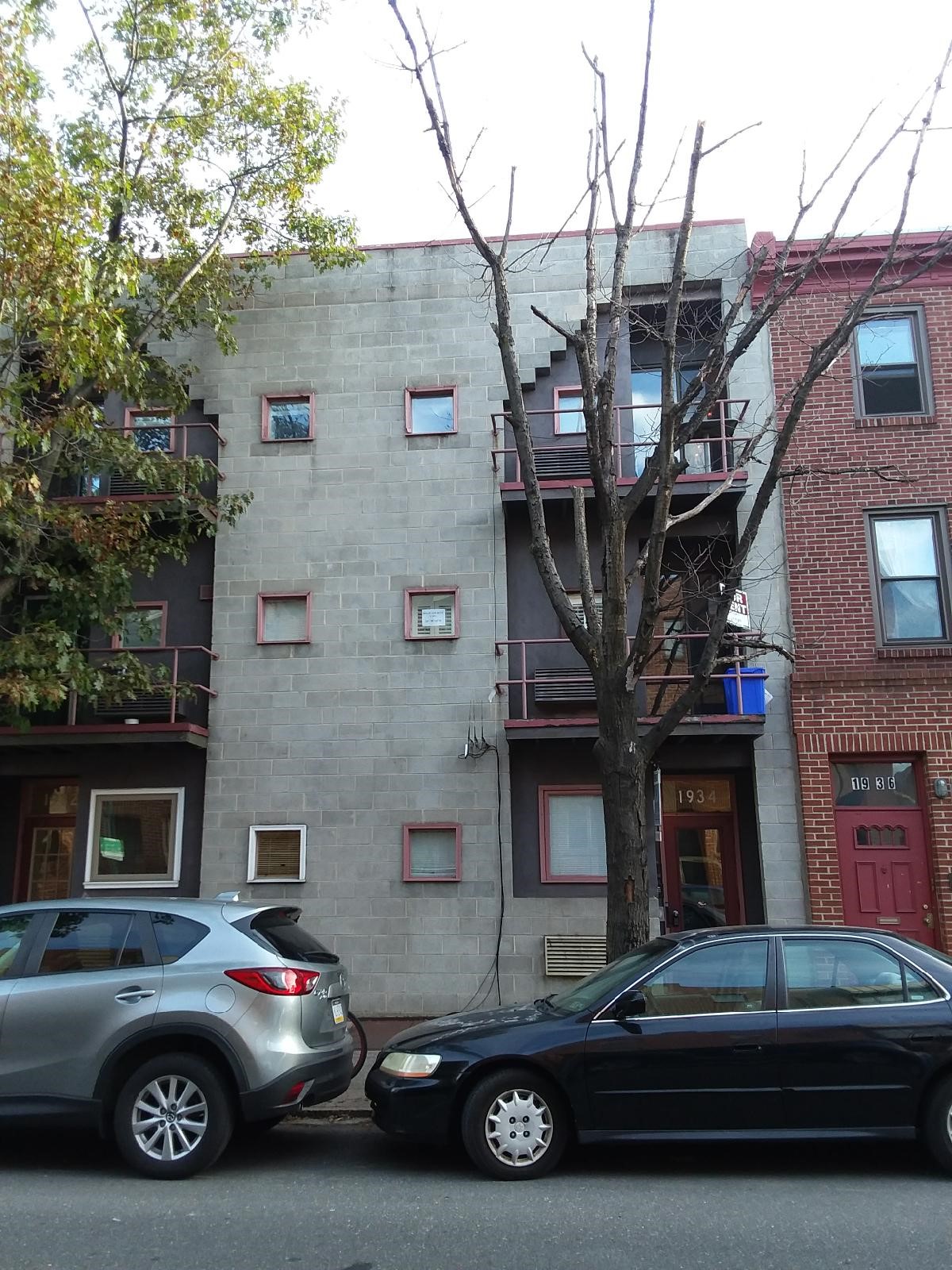
Original windows replaced with really small squares of glass.
In historic neighborhoods the pattern of windows and doors is important since it creates (or disrupts) the visual rhythm and harmony of the streetscape. Maintaining the original pattern of windows helps connect the buildings of the neighborhood and conveys a sense of design authenticity and balance. If all the windows on the block were always tall and narrow and evenly spaced, substituting small square ones, somewhat randomly placed seems like a bad idea.

Imagine how this school looked before the white window infill was installed.
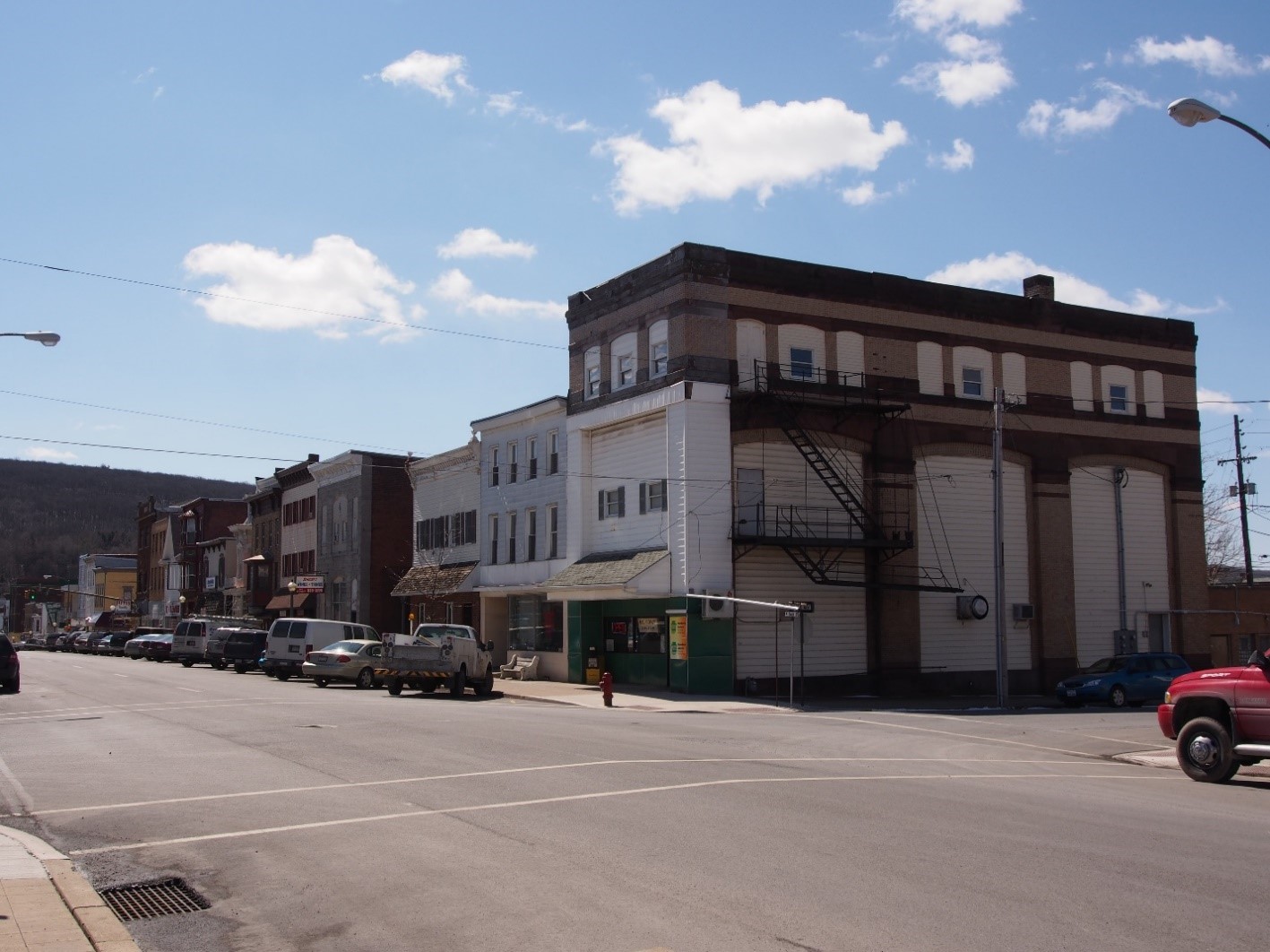
These window infills have impacted the look and feel of these commercial buildings.
The use of hexagonal porthole windows is always a surprise when they pop up on traditional buildings, not sea-worthy vessels. horizontal awning type windows compliment low slung ranch style houses but look out of place when inserted where tall vertical windows once prevailed. Such changes were often done to modernize old buildings and make them appear more in keeping with the current times.

Porthole windows on a porch!
As the decades roll by and tastes change, those nods to the mid-20th century on a 19th century house look even more outdated. And the lack of a cohesive design may be the most memorable element of the building. I think my discomfort with such changes is something like the need to straighten a picture hanging crookedly or mounted too high or too low on the wall. It just looks wrong and I cannot get past that.
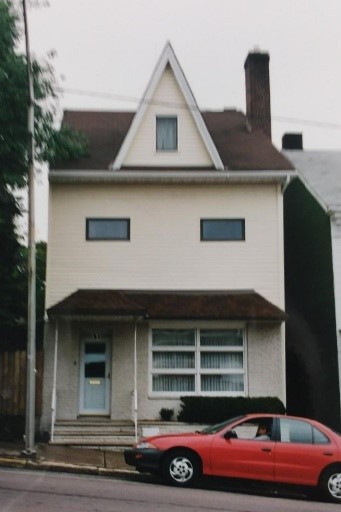
3/4 of the window openings were infilled.
Of course, the use of cheaper, smaller windows on historic buildings often reflects a bigger issue than just changing taste. It is sometimes a sign of economic disinvestment in older communities and evidence of the lack of perceived architectural value of the original buildings. The challenges of repurposing old buildings are very real and communities all over the state struggle to find new uses for buildings whose original function is no longer needed. Sometimes the transition to a new use is not a good fit from an architectural integrity perspective.
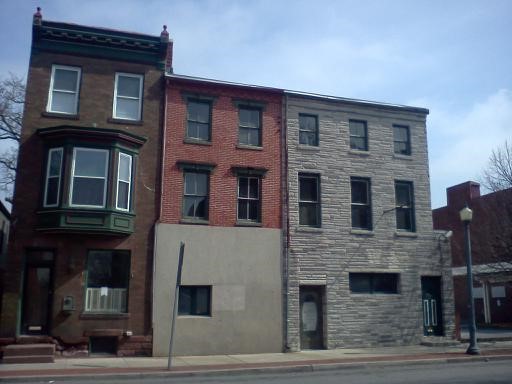
This storefront has been almost completely covered in concrete.
The large windows perfect for a commercial enterprise may pose a challenge for conversion to residential use. So, is an unsympathetic rehab better than abandonment and perhaps loss of a historic building? Maybe, might be the answer, even if preservationists may not be satisfied with the visual outcome. There is always a chance that a unsympathetically rehabilitated old building may fare better at a later time under better economic circumstances or a more suitable reuse.
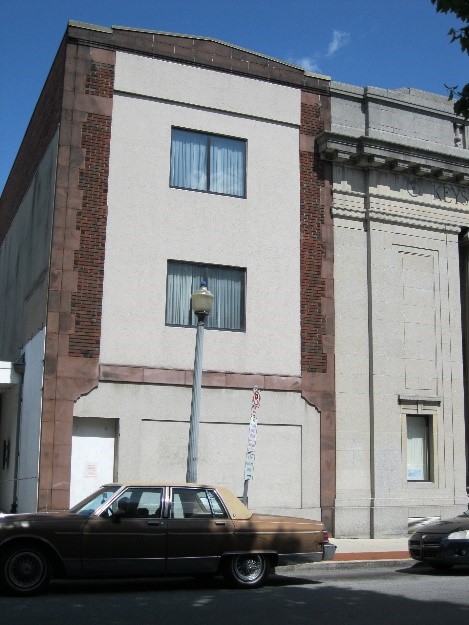
This former bank building has had the original windows infilled and new ones installed.
Another window related issue is design choices for modern infill in historic districts. How wildly different and “of their own time” should those new designs be, yet still remain respectful of their historic environment?
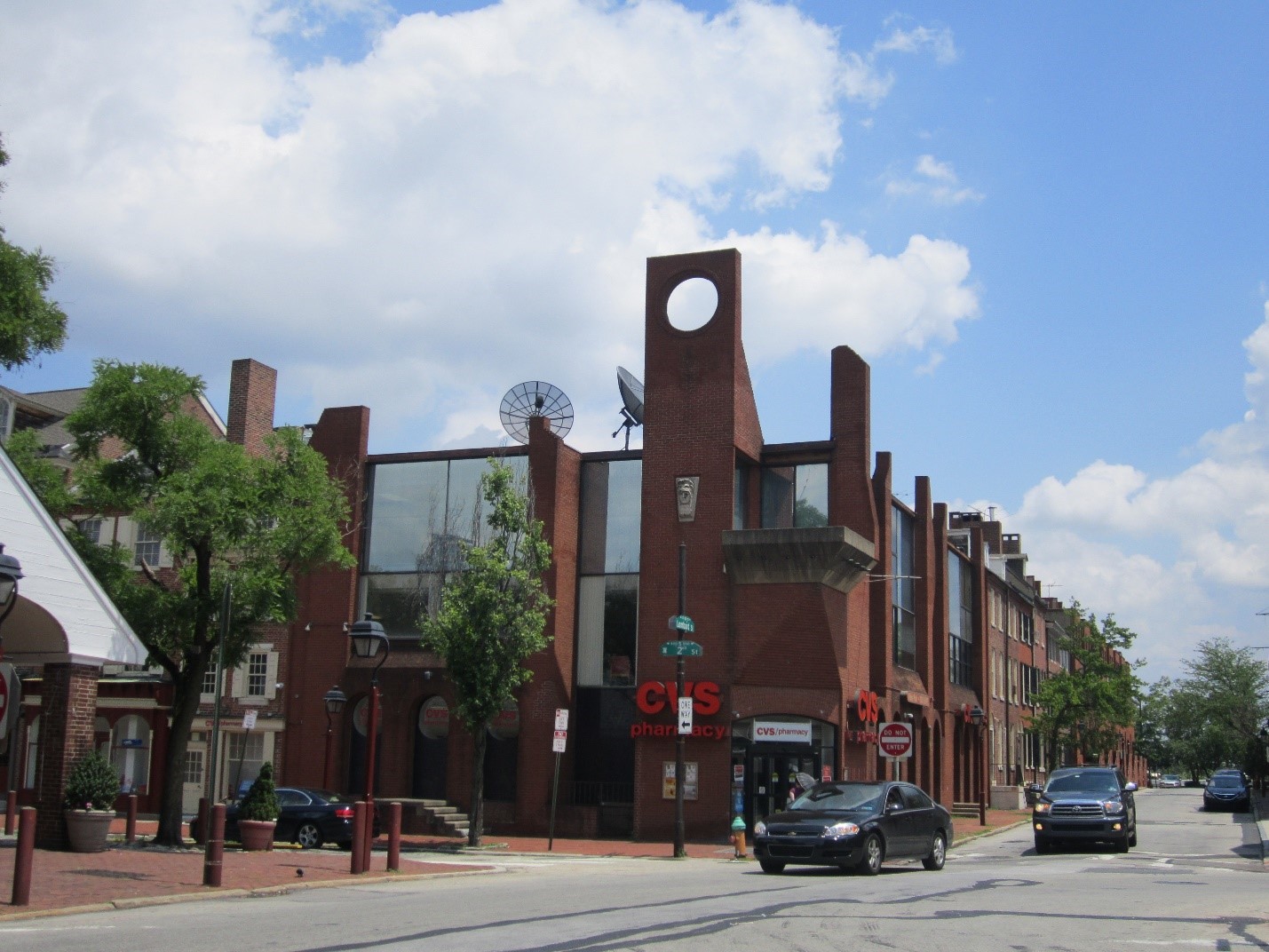
Modern design with modern windows in a neighborhood context.
Personally, I like some of the quirky choices made for both infill and not so traditional rehab. Others just seem weird to me – not designs to meet new uses or needs, but just different to be different. Time may well be the judge of which trendy new approaches to window design survive. Those which quickly appear dated and are poorly integrated into the original visual fabric of the streetscape may not last nearly as long as their traditional counterparts. Contemporary design can be subject to personal taste and opinion and compatibility with the historic fabric of the building or streetscape is not always a black and white issue.
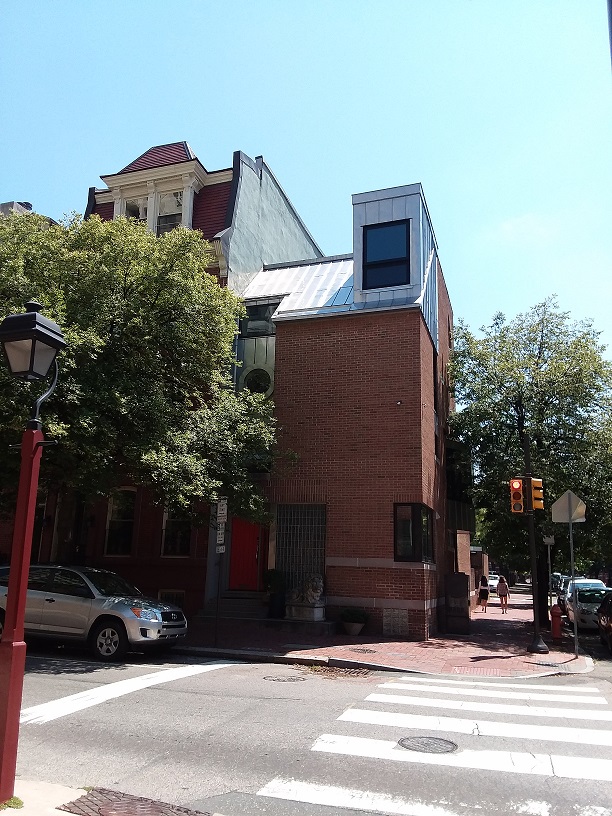
Unusual windows on this rowhouse.
For me, it is all about visual synchronicity – sometimes it works, sometimes it doesn’t, although that can occasionally be difficult to define. Above all, when it comes to the respectful rehabilitation of historic buildings and neighborhoods, windows really matter. If they are not the soul of a building, they come awfully close.
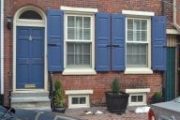
Hi Pamela,
Interesting piece and well-illustrated.
Probably the most important aspect. though, is something I discovered when I went to build a house I designed. The most expensive part — more than the roof, more than the plumbing or HVAC — was the windows. Thus, windows are also the first thing looked at when trimming costs.
That applies to rehab projects, as well.
It’s about money, much more so than taste.
The original lenders forked over enough money for aesthetic statements because they saw a long income-producing future for the project. Lenders today will do the same, if they see general faith in the building’s long-term future.
I’m sure you know all that. But, still the focus has to be on money.
Thanks,
Leon J. Pollom,
NowThenPgh.com
The ‘visual beauty’ of bricked-up windows https://www.bbc.co.uk/news/in-pictures-57349499
Nice post!